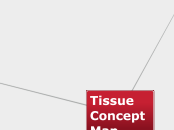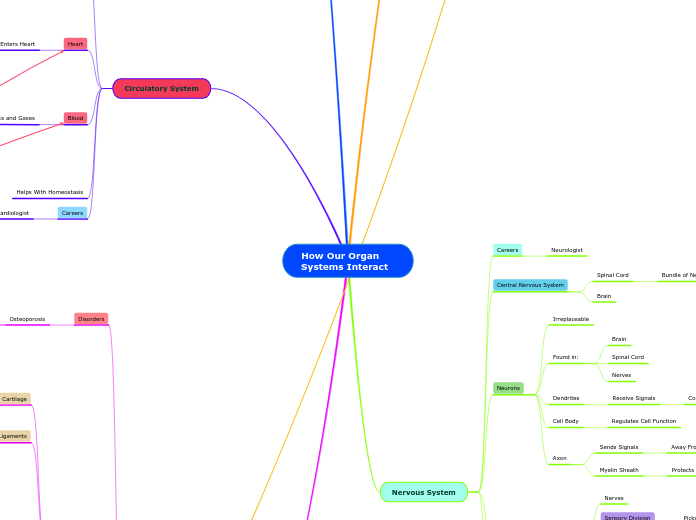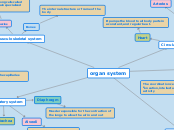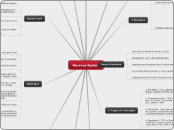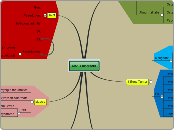Tissue Concept Map
Nervous
Location:
Central nervous system and peripheral nervous system
made up of many different types of nerve cells which transmit potential action signals to the next cell
composed of neurons and neuroglia which transmit and receive impulses
Made up of two part; the brain and the spinal cord
Function:
Transmit impulses
Muscle
Skeletal
Every organelle of a muscle fiber is arranged to ensure form meets function
Skeletal muscles are attached to bones by collagen fibers called tendons
Under control of the somatic nervous system
Function:
Produce skeletal movement, supports
soft tissue, stores nutrients etc.
Location:
Bones
Cardiac
Location:
Heart
The Cardiac muscle cells unlike most other tissues depend on blood to deliver blood and nutrients while getting rid of Carbon Dioxide
The cells that the Cardiac muscle are made up of only have three nuclei
The cardiac muscle is found on the walls and histological foundation of the heart
Function:
Movement and contraction
of the heart
Smooth
Location:
Hallow organs
Function:
Creates movement in hallow organs
3 facts:
Either the whole muscle contracts or the whole muscle relaxes. That is the case with this tissue and it is called being of the single unit variety.
Smooth muscle tissue are found within the walls of blood vessels also in the male and female reproductive tracts
Involuntary non striated muscle
Connective
Specialized
Adipose
Facts
Adipose tissue is more commonly known as body fat
loos connetive tissue made up of adopoctyes
Function:
Insulates, protects and
supports organs.
Stores energy
Location:
Under the skin, around kidneys
and eyes, in abdoman and in
breats
Blood
Function:
Transports oxygen through the body,
helps with immune system and protects
the body from infection and disease
Location:
Blood
contains proteins mixed with water to make gel
Catilidge
Three different types of cartilage, Hyline, elastic and Fibrocartilage
contains a lot of elastic protein fibers which makes it very flexable
Function:
Provides stiff but somewhat flexible support and
reduces friction between bony surfaces
Location:
Tips of ribs, sternum, larynx,
trachea, bronchi and part of
nasal septum
Bone
red bone marrow is found in the spongy bone
filled with central canals which are surrounded by cells
Location:
Bone
Function:
Provides support and protects
the organs
Fibrous
Elastic
Function:
Helps pump blood throughout
the body
Location:
Lungs; between vertebrae
of spinal column, ligaments
suporting penis and transitional
epithelia, blood vessel walls, permits expansion
and contractions of organs
Reticular
Location:
Lymph nodes, spleen and bone marrow
Function:
Forms structural framework of organs
like lymph nodes, spleen, thymus, and bone marrow.
Dense
Regulaur
Function:
Connection and protection
Location:
tendons, ligaments, ligaments between vertebrae,
along dorsal neck and vocal cords
Irregulaur
Location:
Fibrous capsules of
organs and joints and dermis of skin
Function:
Withstand tension and provide stuctural strength
loose connective
Function:
Most widespread connective
tissue; contains all cell and
fiber framework; makes
up volume
Location:
Between tissues and organs,
superficial fascia, and under epithelial
tissue
fibroblast cells are in the loose connective tissue and they secrete strong fibrous proteins
Epithelial
Stratified
Made up of multiple layers of cube shaped cells
Location:
Large ducts of sweat glands,mammary glands and salviary glands
Function:
Protection
Location:
Small amounts in male urethra and in large glands
It is a very rare type of epithelial tissue
composed of column shaped cells arranged in multiple different layers
Function:
Protection and secretion
Function:
Protects underlying tissue in areas subject to abrasion
Location:
Esophagus and mouth
Non-Keratinized surfaces do not have Keratin so they must be kept moist by bodily secretions
Keratinized surfaces are protected by Keratin
Divided into two parts Keratinized and non-keratinized
Simple
Columnar
Function:
Abosrbtion, secretion of mucus, enzymes and other substances
Facts:
Non-ciliated are found lining the gastrointestinal tract
Ciliated moves mucus and is in the upper respiratory tract
Simple columnar epithelium are split into two parts, Ciliated and non-ciliated
It is a uni-layered epithelium meaning that it has one layer to it
Location:
Anal canal, stomach, gallbladder and uterine tubes
Cubiodal
The cells either are active or passive depending on the location
A single layered epithelium made up of cube like cells. The cells have large, spherical, and central nuclei
Location:
Kidney tubules, small galnds and ovary surface
Function:
Secretion and absorbtion
Squamos
3 Facts:
Single layer of flat cells in contact with the basement membrane
Function:
Allows passage of materials by diffusion and filtration in sites where protection is not important
Location:
Mouth, Anal Canal and Mouth
